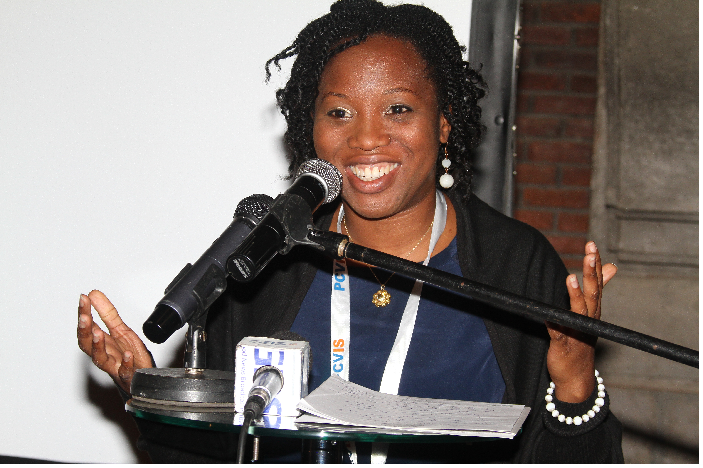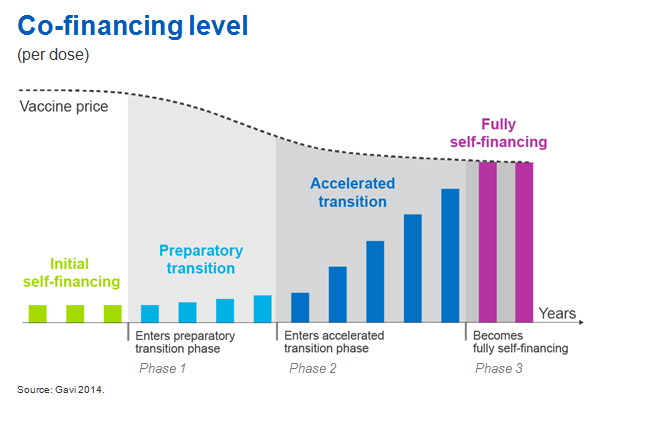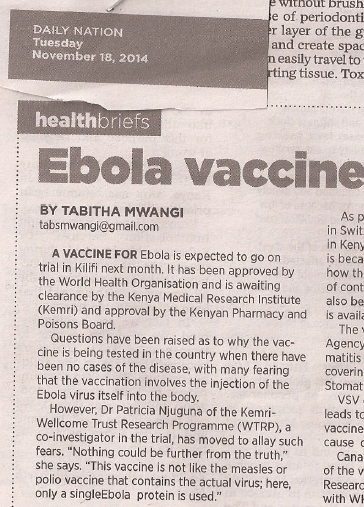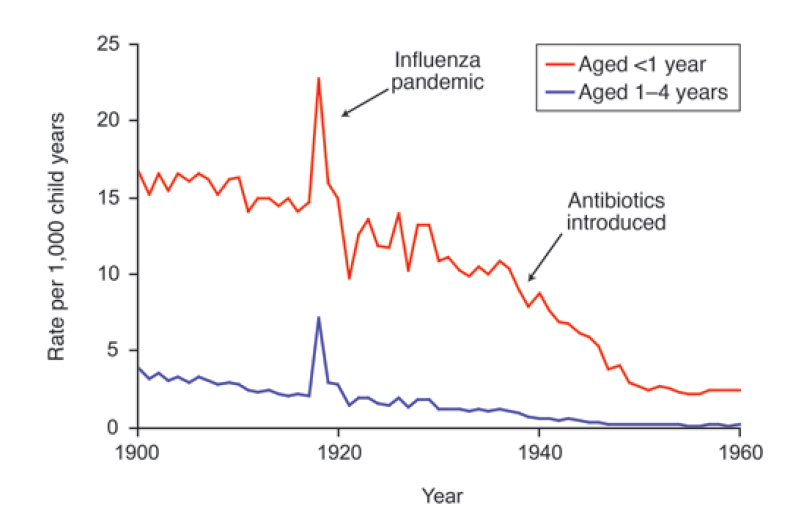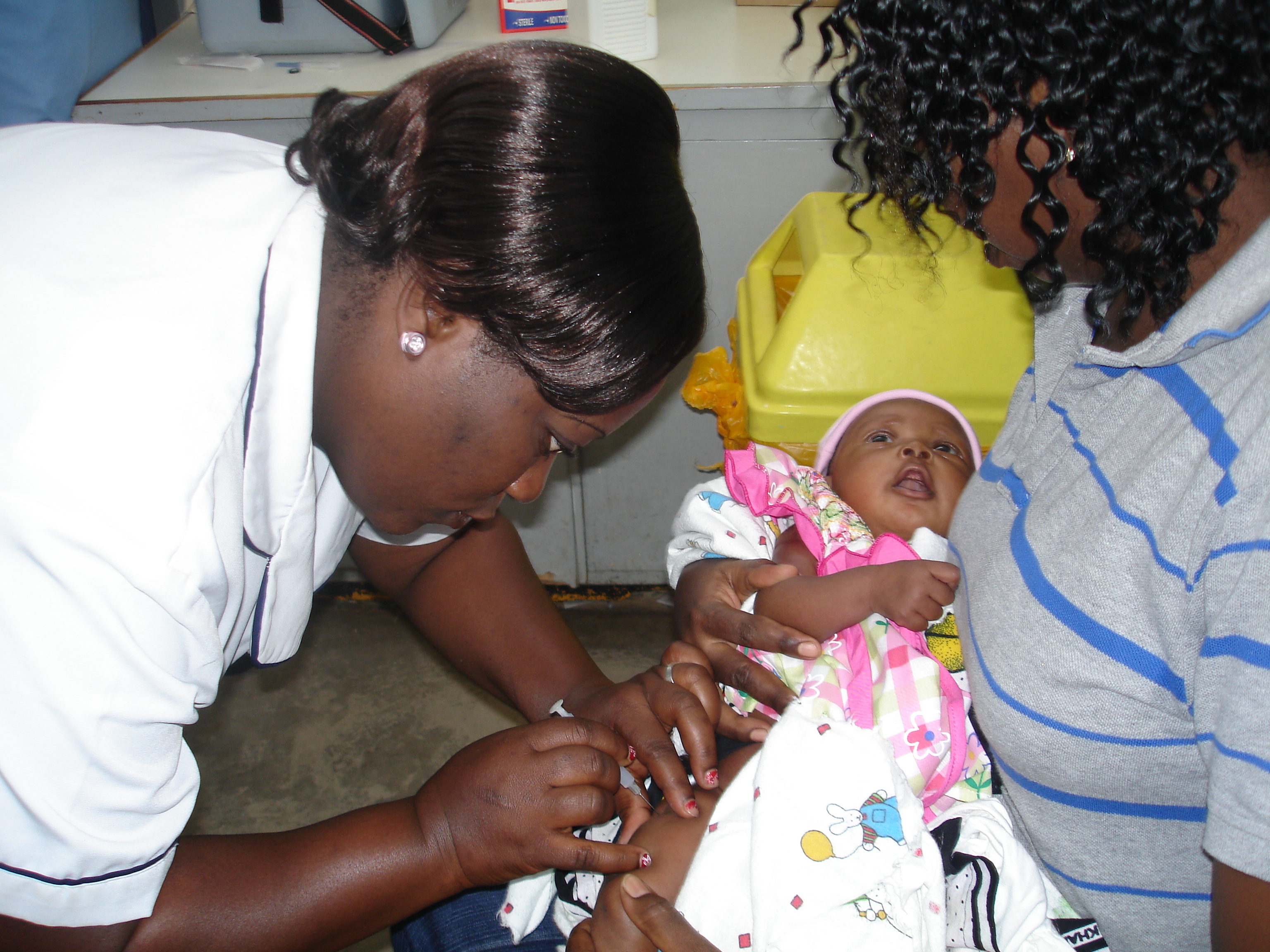
Thinking ahead – who will pay for vaccines?
The current vaccines, PCV10, Rotavirus, HPV are not as cheap as the traditional measles, polio, DPT vaccinations. For a lont time, vaccinations have never been on the list of things to buy for the Ministry of Health. UNICEF and other NGO’s provided them and governments did not need to bother. But the latest vaccines are more expensive. A single dose of PCV10 (a vaccine introduced in 2011 to combat pneumonia) costs about US$3.50. In Kenya alone, we have 1 million new borns each year , each requiring 3 doses of this vaccine. It would cost the country US$ 10 million to give all the babies in the country the full dose of one vaccine. To push the country in the direction of self-sufficiency, a helping hand arrived.
Gavi, The Vaccine Alliance is currently the greatest supporter of immunisation programs in the developing world. Gavi is an amalgamation of various donors, governments, pharmaceutical companies and other bodies that have been brought together for one cause. Gavi has approached its donor effort differently. Chioma Nwachukwu, senior manager, advocacy and public policy at Gavi, explained how this works.
Funding for Gavi comes from multiple sources. The United Kingdom is the biggest donor followed by the Bill and Melinda Gates Foundation. The two account for just under half the support. Gavi also negotiates with vaccine manufacturers, assisting them to offset the research and development funding required to develop vaccines for poor nations from whom they may be unable to recoup these costs. This enables Gavi to negotiate for cheaper vaccines.
Monopoly in vaccine manufacturing keeps the prices of vaccines up – Gavi therefore deals with various vaccine manufacturers at the same time. The same vaccine can be sourced from different firms like GSK, Pfizer, Serum Institute of India among others.
All the countries that receive support from Gavi co-pay for the vaccines from the onset. These countries also have to demonstrate an ability to distribute the vaccines by having good coverage across the country. Figures from The World Bank are used to measure economic growth of each country. As the economy of a country grows, the country pays more for the vaccines up to the time which they take on the full cost of the vaccine.
Gavi supported countries often start at the initial self-financing phase where they pay only US$0.20 (2 cents) per dose. Kenya, Rwanda, Uganda, Burundi and Tanzania are all at this level. As they grow economically, countries will then progress to the next phase – preparatory transition stage where there is a 15% increase in what the country receiving pays into the vaccines every year.
To move into the last phase (accelerated transition), the countries need to have grown economically and with negotiations, the payment are increased and it is hoped that in 5 years, the country is then free to pay for the vaccines. Countries that have reached the point where they are paying fully for the vaccines have a grace period of about 5 years where they pay the Gavi negotiated price before they can move into paying the market rates for the vaccines.
Over many years, African governments have grown accustomed to vaccines being provided by donors and have often not had ‘immunisation’ is an item in the Ministry of Health budget. This is a huge paradigm shift. However, the population of the continent is growing and the vaccines that are being produced lately are extremely expensive and no donor can afford to supply them for free to the continent.
However, Africa need not panic. The Pacific American countries have done ahead of us and shown the options that are available. A total of 41 countries in the Pacific American region have pooled resources to procure high-quality vaccines, syringes and related supplies by buying in bulk through the Paho Revolving Fund.
http://www.paho.org
Countries in this group have managed to eliminate polio, measles and rubella through this effort.
The bulk of newborns in the near future will be in Africa, herein stands an opportunity to use ‘economies of scale’ to keep market prices down.
This particular meeting had delegates from Kenya, South Sudan, Burundi, Rwanda, Uganda, South Africa, Zimbabwe, Nigeria, USA, UK. Notably missing were invited delegates from Tanzania and Ethiopia, a real pity as the region needs to move ahead in togetherness in times ahead.
We cannot have a ‘coalition of the willing’ when it comes to the health of the region. Our health leaders need to put aside the petty politics of the time and do what the pacific Americans have done.
Look at the PAHO revolving fund. I am sure that these countries do not agree on how to govern and what friends to have – but because they have large numbers of children, they have a huge demand for vaccines and have directly bargained for sustainable vaccine prices from manufacturers.
Let’s take a look at the African demographic… Kenya is not unique with 40% of its population under the age of 14 years.
In the next 10 years, when this population is slowly (hopefully!) starting to produce babies, the population of Africa will be among the fastest growing in the world. As a continent, we shall have one of the largest cohort of newborns – with hundreds of millions of vaccinations required, we can convince anyone to keep the prices down. We do however need to come together and fight for ourselves – in fact for the number of babies we are producing, if we thought as one, Gavi, would not need to hold our hand for so long. If only we could see strength in unity.


